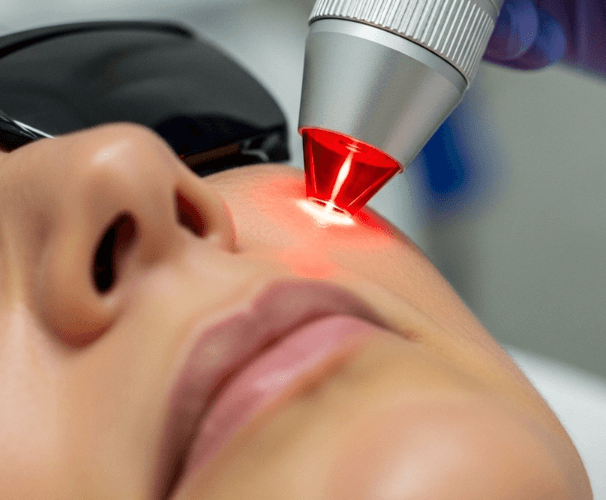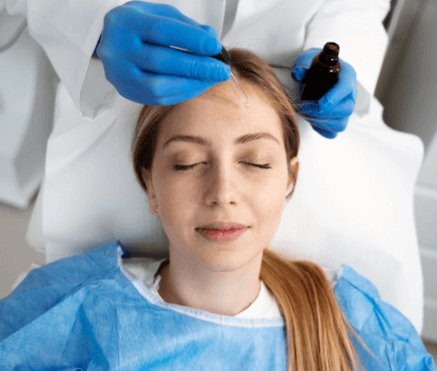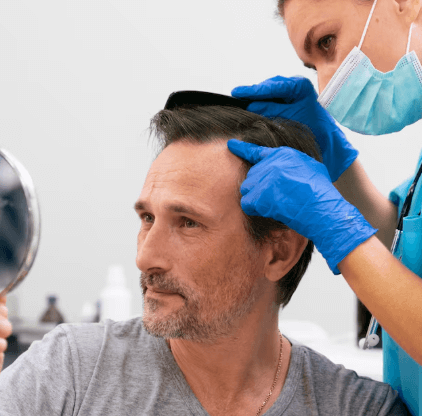Treatment Overview
The Q-Switched Ruby Laser (694 nm) is one of the earliest pigment-targeting lasers, highly absorbed by melanin, making it powerful for breaking down pigment clusters. It has been widely used for tattoos, freckles, café-au-lait spots, and age spots.
In Korea, the Q-Switched Ruby Laser is sometimes applied for stubborn melasma or mixed pigmentation, but its use is very cautious. Because Ruby lasers have a higher risk of post-inflammatory hyperpigmentation (PIH) in darker or Asian skin, Korean dermatologists generally prefer Pico Lasers, Nd:YAG Toning, or Dual Toning for melasma, and reserve Ruby for resistant cases or specific congenital pigment conditions.
It belongs to the Pigmentation Treatment family (Ruby, Alexandrite, Nd:YAG, Dual Toning, Gold Toning, Pico, Fraxel, Clear + Brilliant):
- Ruby (694 nm): Best for resistant melasma + congenital pigmentation.
- Alexandrite (755 nm): Best for deeper congenital pigment + mixed melasma.
- Nd:YAG (1064 nm): Best for dermal melasma.
- Dual Toning: Best for multi-layer melasma.
- Gold Toning (595 nm): Best for vascular melasma.
- Pico Lasers: Best for resistant melasma + PIH with low recurrence risk.
- Fraxel Dual: Best for melasma + texture + sun damage.
- Clear + Brilliant: Best for mild melasma and prevention.
Purpose & Benefits
- Stubborn Melasma Clearance: Helps lighten pigmentation unresponsive to other lasers.
- Deep Pigment Targeting: Penetrates dermal pigment clusters.
- Congenital Pigment Removal: Useful for café-au-lait spots and nevus of Ota.
- Long-Lasting Results: Strong melanin absorption reduces recurrence when effective.
- Combination Approach: Often paired with Nd:YAG or Pico for safer melasma care.
Ideal Candidates
Q-Switched Ruby Laser in Korea is recommended for:
- Adults with resistant or mixed-type melasma.
- Patients with coexisting congenital pigmentation (nevus of Ota, café-au-lait).
- Individuals who did not fully respond to Nd:YAG or Pico treatments.
Treatment Comparison:
- Ruby: Best for resistant melasma + congenital pigment.
- Alexandrite: Best for mixed pigment + café-au-lait.
- Nd:YAG: Best for classic dermal melasma.
- Dual Toning: Best for epidermal + dermal melasma layers.
- Gold Toning: Best for vascular melasma with redness.
- Pico: Best for resistant melasma + scars/PIH with less PIH risk.
- Fraxel Dual: Best for melasma with sun damage + texture.
- Clear + Brilliant: Best for preventive or mild melasma.
Possible Risks & Complications
Because it strongly targets melanin, risks are higher in darker or Asian skin:
- Redness & Warmth: Temporary, fades in 1–2 days.
- Pigment Darkening: Temporary before fading.
- PIH: Post-inflammatory hyperpigmentation risk is higher vs. Nd:YAG/Pico.
- Rare Risks: Hypopigmentation or scarring.
Surgical Techniques Used
- 694 nm Wavelength: Strong absorption by melanin.
- Nanosecond Pulses: Breaks pigment clusters into smaller fragments.
- Combination Therapy: Often paired with Pico or Nd:YAG to reduce PIH risk.
- Protocol: 3–5 sessions spaced 4–8 weeks apart; careful energy levels for melasma patients.
Recovery & Aftercare
- Immediately: Mild redness, warmth, or swelling.
- 2–5 Days: Pigment may darken or crust before shedding.
- 1–2 Weeks: Clearer tone and reduced pigmentation.
Aftercare Tips:
- Apply SPF 50+ sunscreen daily.
- Use hydrating and soothing creams.
- Avoid scrubs, acids, or retinoids for 5–7 days.
- Strict sun avoidance during treatment cycles.
Results & Longevity
- First Session: Pigment may temporarily darken before clearing.
- Short-Term (2–3 Sessions): Visible melasma lightening.
- Medium-Term (3–5 Sessions): Noticeable reduction in resistant pigmentation.
- Long-Term: Results may last 6–12 months; recurrence is possible, so maintenance may be needed.
Treatment Process in Korea
- Consultation & Skin Analysis – Evaluate melasma type, depth, and pigment resistance.
- Preparation – Cleansing, protective eyewear, optional numbing cream.
- Ruby Session – Focused nanosecond pulses delivered to pigment clusters.
- Post-Care: Cooling mask, hydrating serum, whitening care.
- Follow-Up: Multiple sessions, often combined with Pico/Nd:YAG.
Why Korea is a Top Destination
- Korean dermatologists are highly cautious with Ruby lasers in melasma, using safe, conservative settings.
- Clinics often integrate Ruby with Pico or Nd:YAG for balanced results.
- More affordable compared to Western pigmentation treatment.
- Many clinics provide skin boosters (Rejuran, exosomes, PN) for healing and pigment stabilization.
- Seoul is recognized worldwide for advanced pigmentation correction protocols.
Cost Range (Estimated)
- Single Session (full face): USD 200 – 400
- 3–5 Session Package: USD 800 – 1,800
- Premium Package (Ruby + Pico/Nd:YAG + Boosters): USD 1,500 – 3,500
Additional Costs:
- Consultation: USD 20 – 50
- Add-ons (Exosomes, PN boosters, whitening drips): USD 100 – 400
💡 The Q-Switched Ruby Laser is often referred to as a “last-line melasma laser” in Korea, reserved for stubborn or mixed pigment cases due to its strong melanin absorption and higher PIH risk.
Popular Clinics
- Banobagi Dermatology (Seoul): Ruby + Nd:YAG for resistant melasma.
- Oracle Dermatology (Seoul): Ruby + Pico protocols for stubborn pigmentation.
- Renewme Skin Clinic (Seoul): Resistant melasma treatment with Ruby + regenerative boosters.
- View Plastic & Dermatology (Seoul): Ruby for congenital pigment + melasma combos.
- Chaum Anti-Aging Center (Seoul): Premium Ruby programs with exosome and PN boosters.




